Peculiar Pollinators in the Midwest
We all know the honeybees that pollinate our flowers in the Midwest. But did you know there are some other, shall we say, peculiar pollinators? Learn about the importance of lesser-known pollinators.
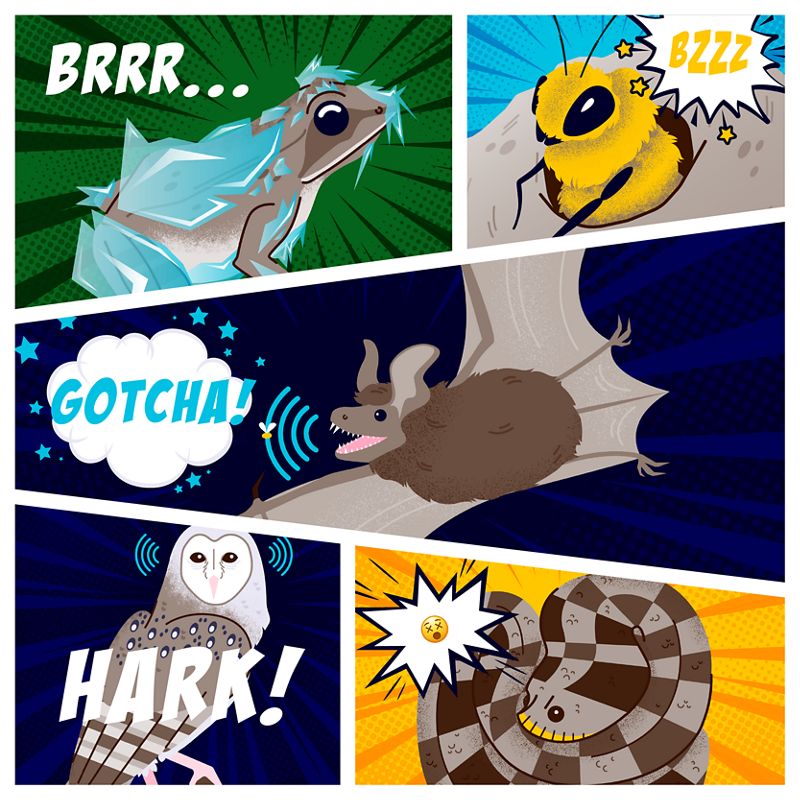
These Midwest marvels are wild—and wildly important to protect.
Since Superman first soared onto comic book pages in 1938, our imaginations have been captivated by the idea of superpowers like flight, shapeshifting, super-strength and more. While these fictional heroes inspire us, nature has its own cast of extraordinary characters, right here in the Midwest.
These animals didn’t gain their powers from our yellow sun or a radioactive spider bite. Their abilities—like chemical defense, silent flight and echolocation—come directly from nature. From wetlands to woodlands, these creatures use their natural superpowers to survive, thrive and shape the ecosystems around them.
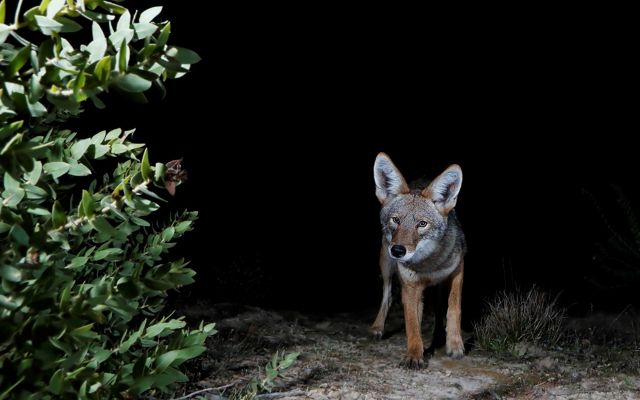

The Midwest is home to incredible wildlife with what might seem like superpowers. But these powers aren’t science fiction—they’re amazing adaptations that have evolved over time, helping these common species survive and thrive in their native environments.
Still, even the most well-adapted animals can’t go it alone. To continue thriving, they need their habitats to remain healthy, intact and whole. That’s why The Nature Conservancy and our partners are working across the Midwest to protect and restore the lands and waters on which these species depend. By conserving forests, wetlands and prairies, we’re ensuring that nature’s most remarkable creatures—and the ecosystems they help shape—can continue to flourish for generations to come.
Continue reading to discover 10 of the most remarkable examples of superpowered wildlife in the Midwest that benefit from and rely on the land protection and conservation we do every day.
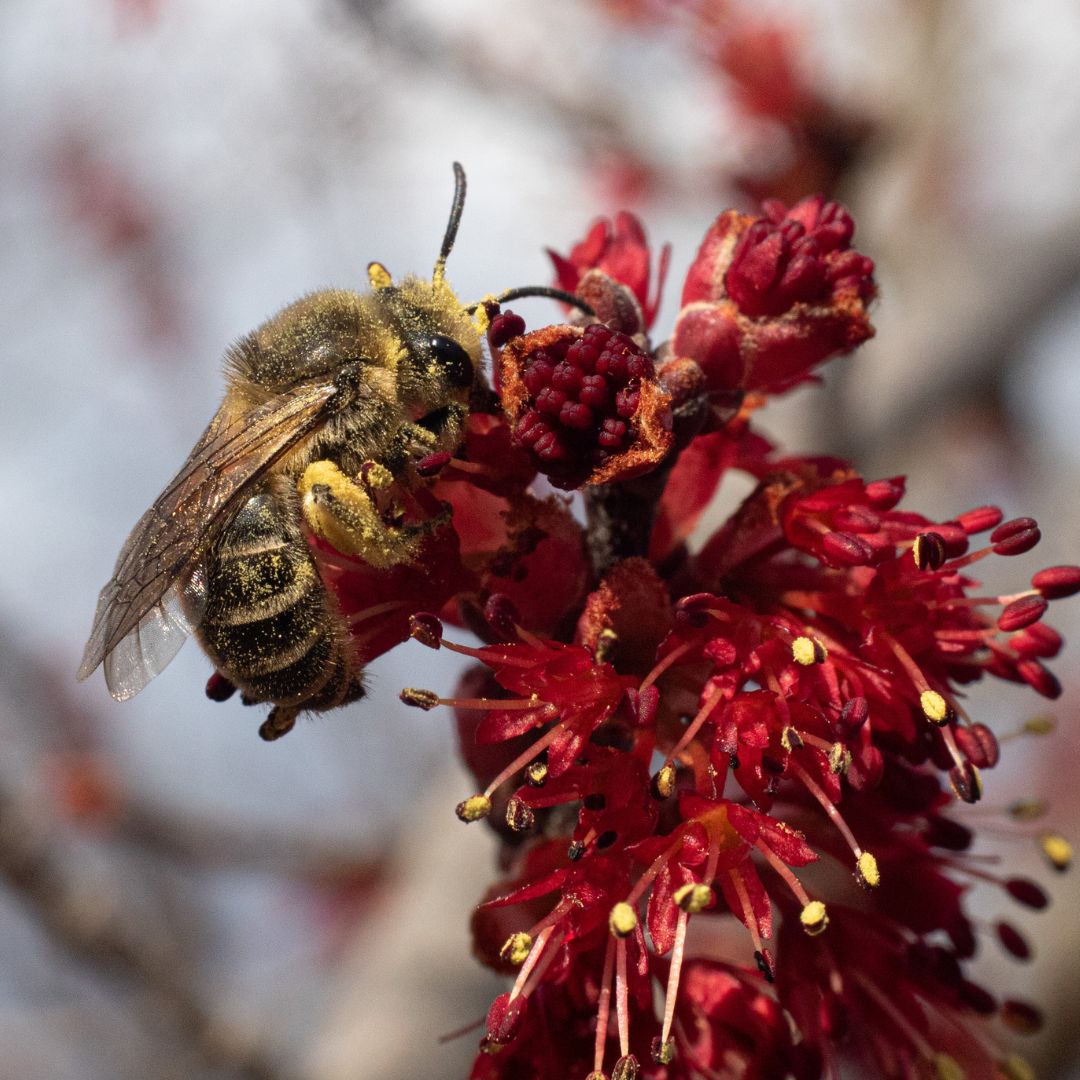
Bioplastic Pioneer
These tiny bees create waterproof nests by making a bioplastic in their abdomens.
Also known as cellophane bees (Colettes spp.), these tiny insects—about the size of a piece of macaroni—have heart-shaped faces and dull yellow-and-black bands. Important native pollinators in the Midwest, polyester bees are solitary ground-nesters—and nature’s original bioplastic engineers.
A female digs a tunnel with side chambers, each lined with saliva and a special polymer from her abdomen. This natural “cellophane” waterproofs the cell, protects the egg, and preserves the nectar-pollen mix she leaves behind. Once sealed, the egg hatches into a larva with everything it needs to grow.
Scientists are studying this natural bioplastic to inspire sustainable alternatives to synthetic plastics. These bees may hold the key to a greener future—one built on the brilliance of nature’s own ingenuity.
Get to know some of our native wild bees in the Wild Bees Field Guide.
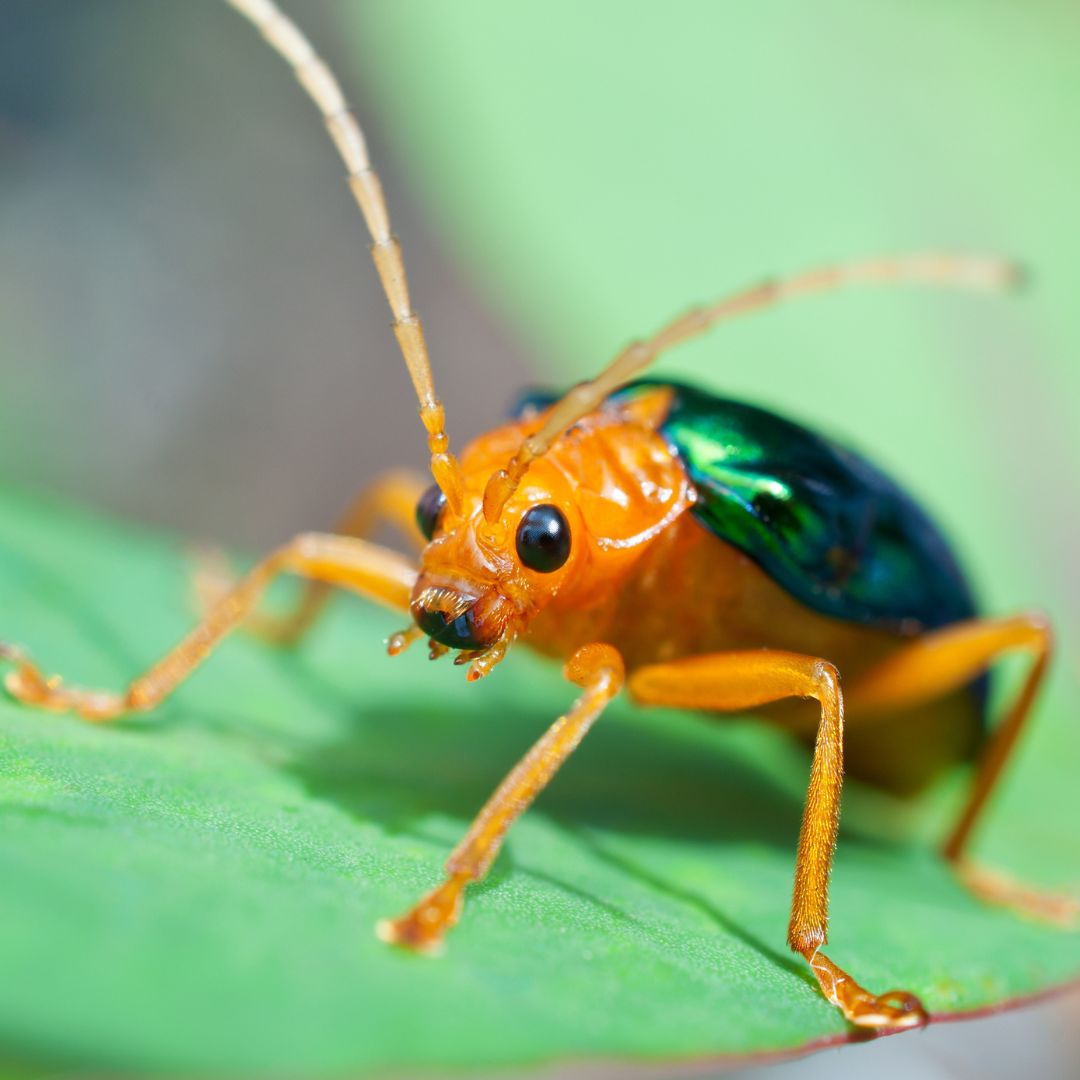
Chemical Cannon
This beetle doesn’t just defend itself—it blasts predators with a built-in caustic chemical cannon.
Don’t let their size fool you—bombardier beetles (Brachinus spp.) are among the Midwest’s most explosive insects. About an inch long, they live in forests and grasslands, hiding under leaves and logs. With reddish heads, bluish wing covers and nocturnal habits, they hunt insects and worms at night—and often hang out in groups when not hunting.
Their real superpower? A built-in chemical cannon. Inside their abdomen, two glands produce hydrogen peroxide and hydroquinone. When threatened, the beetle mixes them in a third chamber, triggering a boiling, corrosive reaction. With a loud pop, it blasts the corrosive spray from its rear at predators. It can swivel its abdomen nearly 270 degrees for pinpoint aim, too.
From PBS
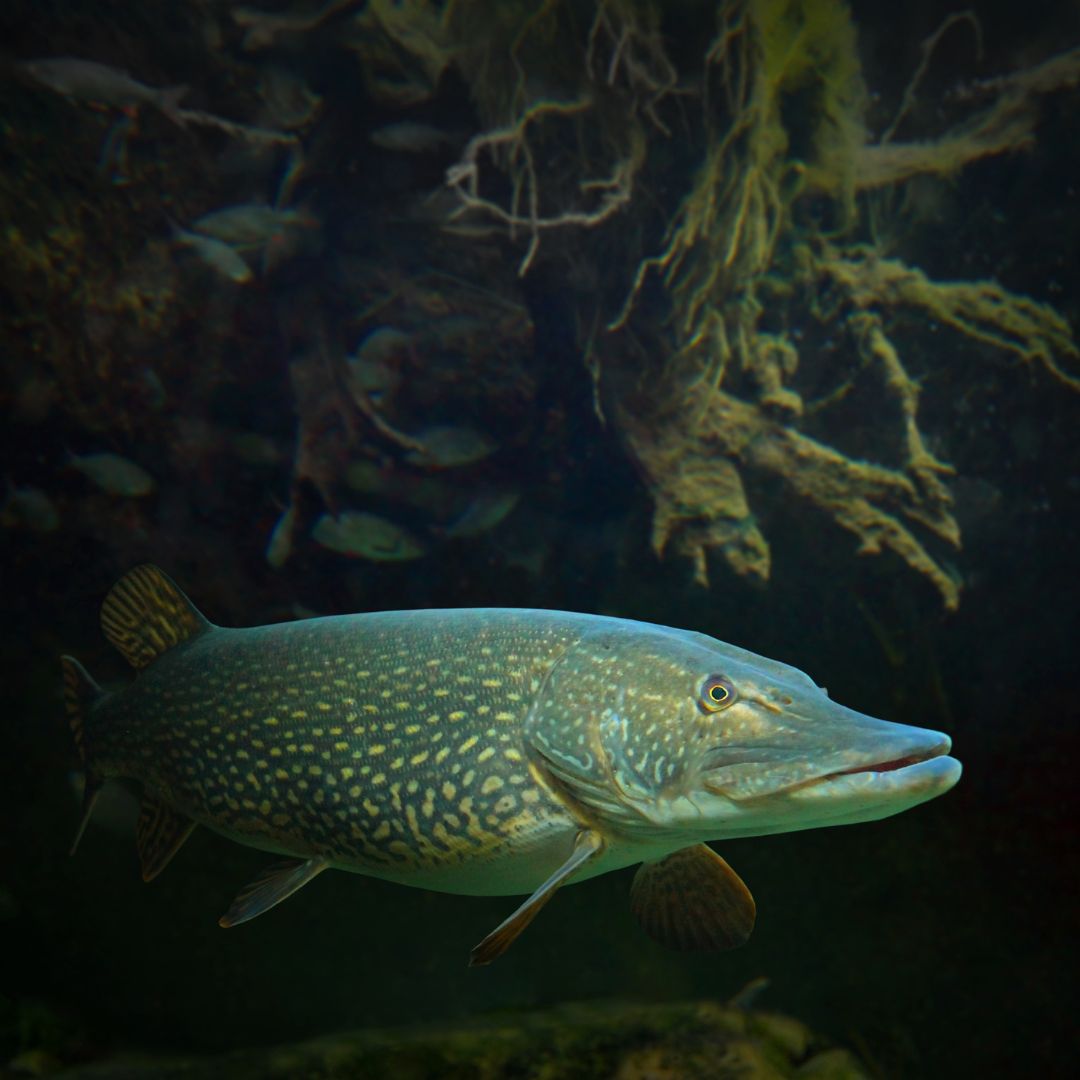
Blind Precision
Guided by senses so sharp, this fish doesn’t even need to see its prey.
The Northern pike (Esox lucius) is one of the Midwest’s top freshwater predators. Long and torpedo-shaped, it’s built for ambush—launching from a standstill with a powerful tail and slick, slime-coated body. Large eyes give it a nearly 360° view, perfect for tracking prey at high speed.
But its real edge lies in its lateral line system: specialized pores and sensory organs detect the faintest water vibrations. Even blind, a pike can strike with deadly accuracy, guided by movement and pressure changes alone. This blend of speed, stealth and sensory precision makes the Northern pike a master hunter—and a crucial player in healthy aquatic ecosystems.
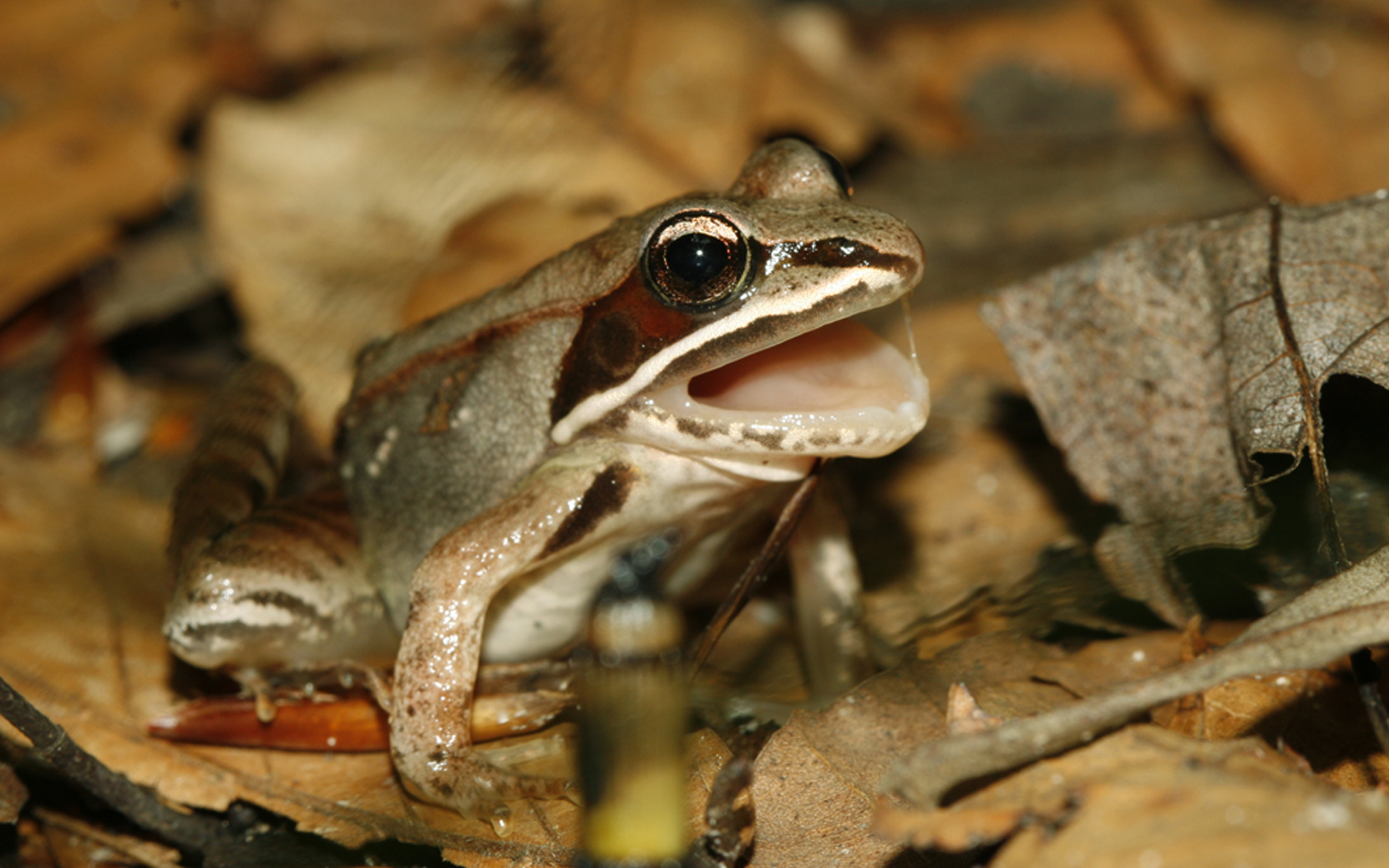
Icy Wonders
The cold never bothered these early spring frogs anyway.
One of the first signs of spring in the Midwest, wood frogs (Lithobates sylvaticus) emerge from the forest floor and head straight for vernal pools—temporary ponds formed by melting snow and rain—as soon as temperatures begin to rise. There, the males call out with loud, quacking songs to attract mates.
But Midwest winters are harsh, and early springs often bring unpredictable weather, including sudden temperature drops. So, how does a cold-blooded frog survive when conditions plunge near or below freezing? That’s its superpower: the wood frog can freeze nearly solid and survive.
As temperatures drop, it floods its cells with glucose, a natural antifreeze. Ice forms between its cells, and its heart and lungs stop as the frog enters a sort of suspended animation. When warmth returns, it thaws and hops away—one of nature’s most astonishing adaptations for survival.
Explore more about Midwest wetlands and the creatures that depend on them.
When danger strikes, this snake puts on the performance of a lifetime.
With a slightly upturned snout and a stout, three-foot-long body, the Eastern hognose snake (Heterodon platirhinos) is a master of deception. Found in dry, sandy habitats across the Midwest, this common snake is one of nature’s most convincing actors.
When threatened, it flattens its neck like a cobra, hisses and strikes—without biting. If that bluff fails, the performance escalates. The snake thrashes, rolls onto its back, hangs its tongue out, drools and releases a foul-smelling musk. Then it goes limp, playing dead for up to 45 minutes. Once the coast is clear, it slithers off, drama complete.
But these snakes have a tell: flip a “dead” hognose onto its belly, and it’ll roll right back over to keep the act going.
Hognose snakes may be full of drama, but they’re no danger to humans. While technically mildly venomous, their toxin is specialized for subduing toads and other amphibians—not people. Unlike venomous snakes, which inject venom to immobilize their prey on contact, hognose snakes use their rear teeth to deliver their toxin mid-meal, making it easier to swallow. For humans, it’s harmless unless there’s a rare allergic reaction. And honestly, they’d rather play dead than bite.
Cape not required—just click a tile below to discover how you can be a superhero for nature in the Midwest and beyond.
Stay connected to nature near you thorough local and global stories in our monthly Nature News e-mail.
From guided walks at local preserves to virtual events, find out how you can connect with fellow nature lovers and learn from scientists and other experts.
Make your voice heard on the urgent conservation issues facing our world. Our Action Center helps you easily contact your elected officials.
Whether you are interested in getting your boots dirty on trails or organizing data in an office, your local TNC chapter has a role for you!
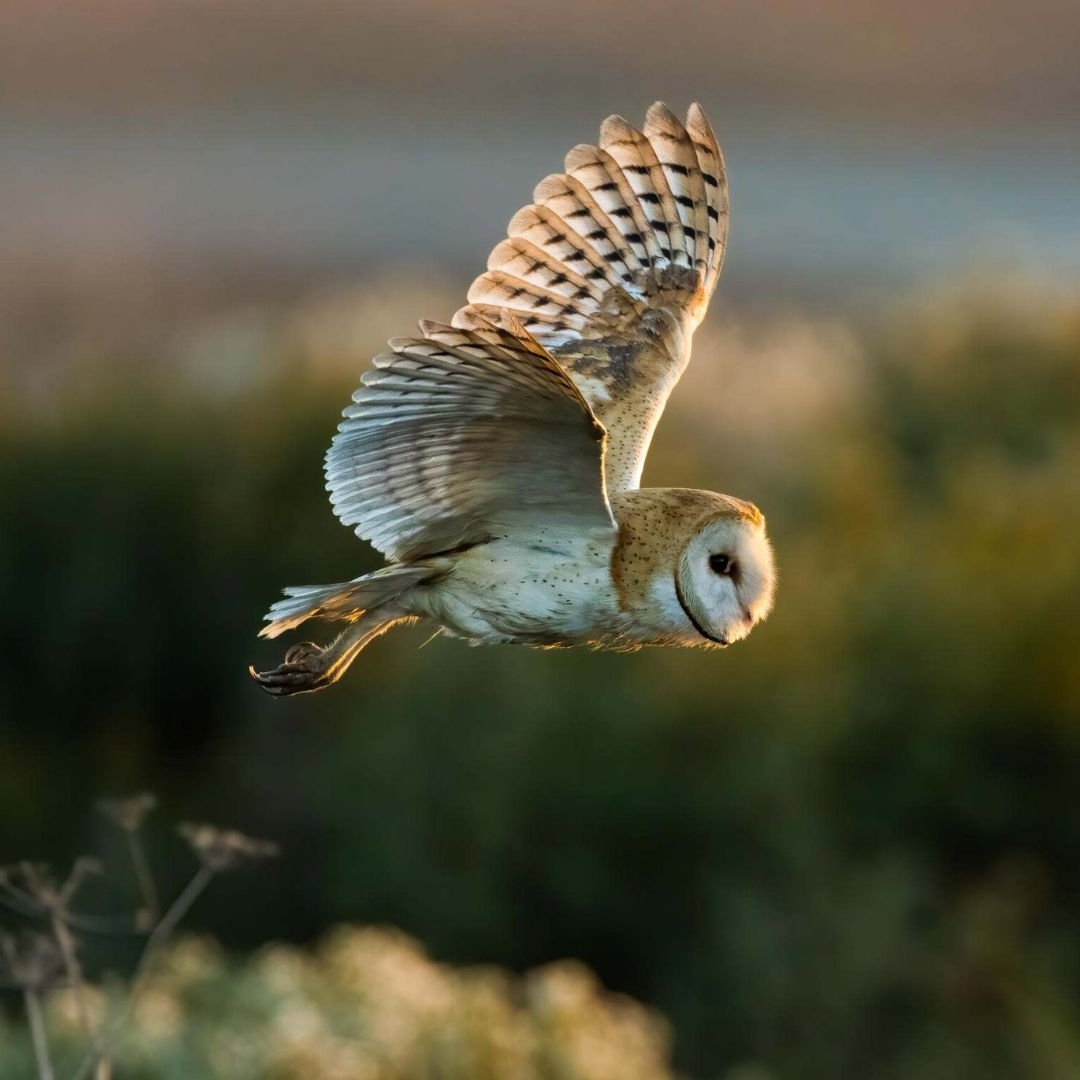
Feathered Phantom
Quiet wingbeats and pinpoint hearing make this owl a nightmare for its prey.
The American barn owl (Tyto furcata) is a ghostly figure in the night sky, gliding silently over grasslands, farmlands and even suburban neighborhoods. Strictly nocturnal, it roosts in quiet, hidden spots—barns, tree cavities or abandoned buildings—emerging at dusk to hunt. Its superpower? A blend of extraordinary hearing and nearly silent flight.
Barn owls can detect prey by sound alone, even in total darkness or beneath snow. Their heart-shaped facial disc funnels sound to asymmetrical ears—one higher than the other—allowing pinpoint accuracy in locating prey. In fact, their ability to locate prey by sound is one of the best of any animal ever tested.
Once locked on, the owl strikes in silence. Its broad wings are lined with soft, velvety feathers and comb-like edges that break up air turbulence, muffling wingbeats and allowing it to swoop down unheard.
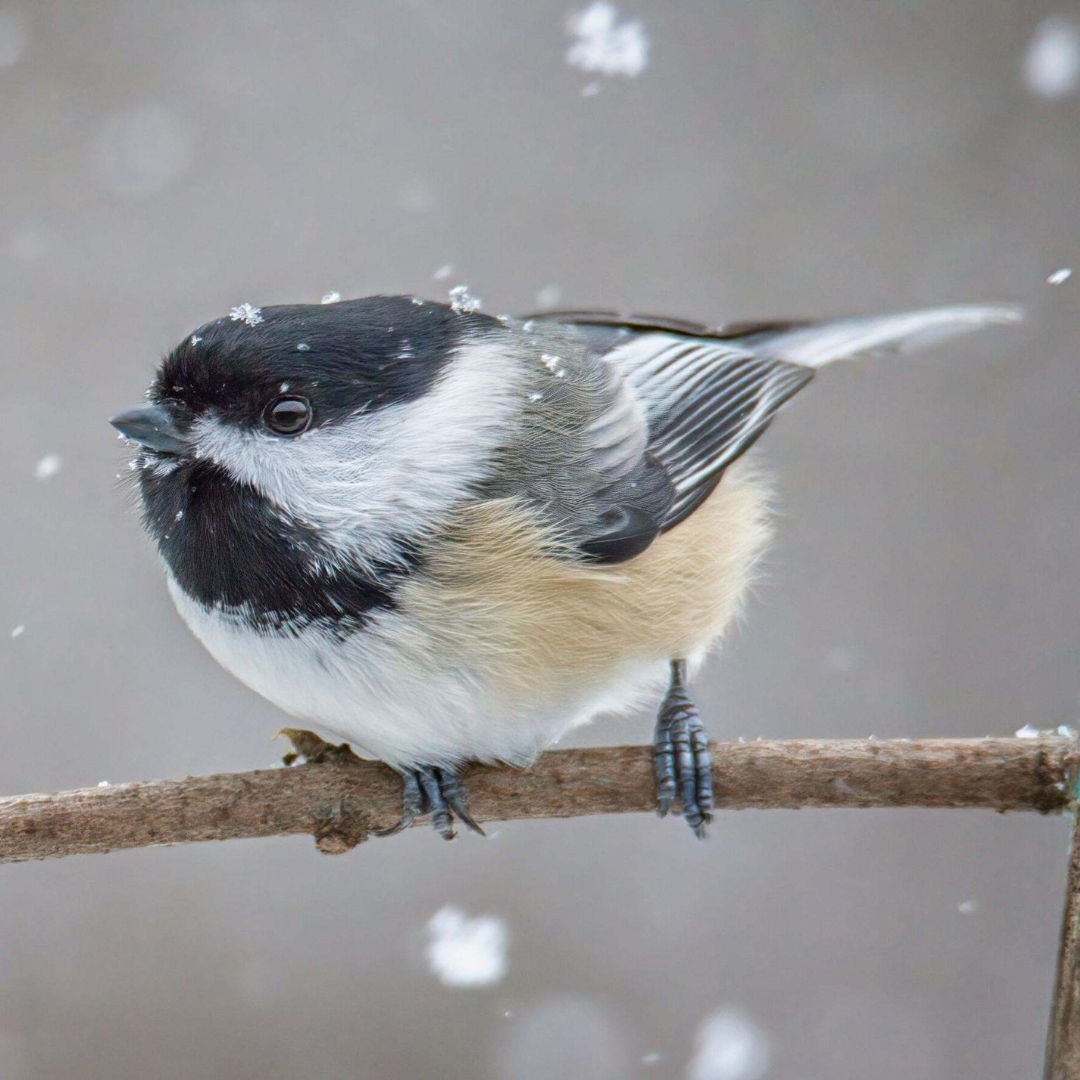
Brainy Bird
Every year, this tiny bird transforms its brain to survive winter.
A familiar year-round sight across the Midwest, black-capped chickadees (Poecile atricapillus) are small, social songbirds known for their cheerful “chick-a-dee-dee” call. But behind their tiny size lies a truly superpowered brain.
Each fall, chickadees stash food—like seeds and nuts—in hundreds of hidden spots across their territory. They also join mixed flocks with other chickadees and bird species like nuthatches and woodpeckers. That’s when their brain begins to rewire.
Old neurons are pruned, new ones form, and the hippocampus—a part of the brain responsible for spatial memory—grows up to 30%. This helps them remember every food cache and adapt to shifting flock dynamics and predators. Come spring, their hippocampus shrinks again, freeing up brainpower for nesting and raising young. It’s one of nature’s most remarkable examples of seasonal neuroplasticity.
Get some birdwatching tips and tricks to spot chickadees and other birds in your area.
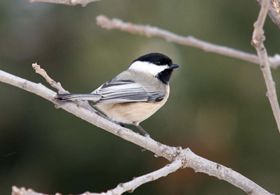
Listen to an example of the black-capped chickadee's "chick-a-dee-dee" call.
The easily recognizable two note AB call of the black-capped chickadee.
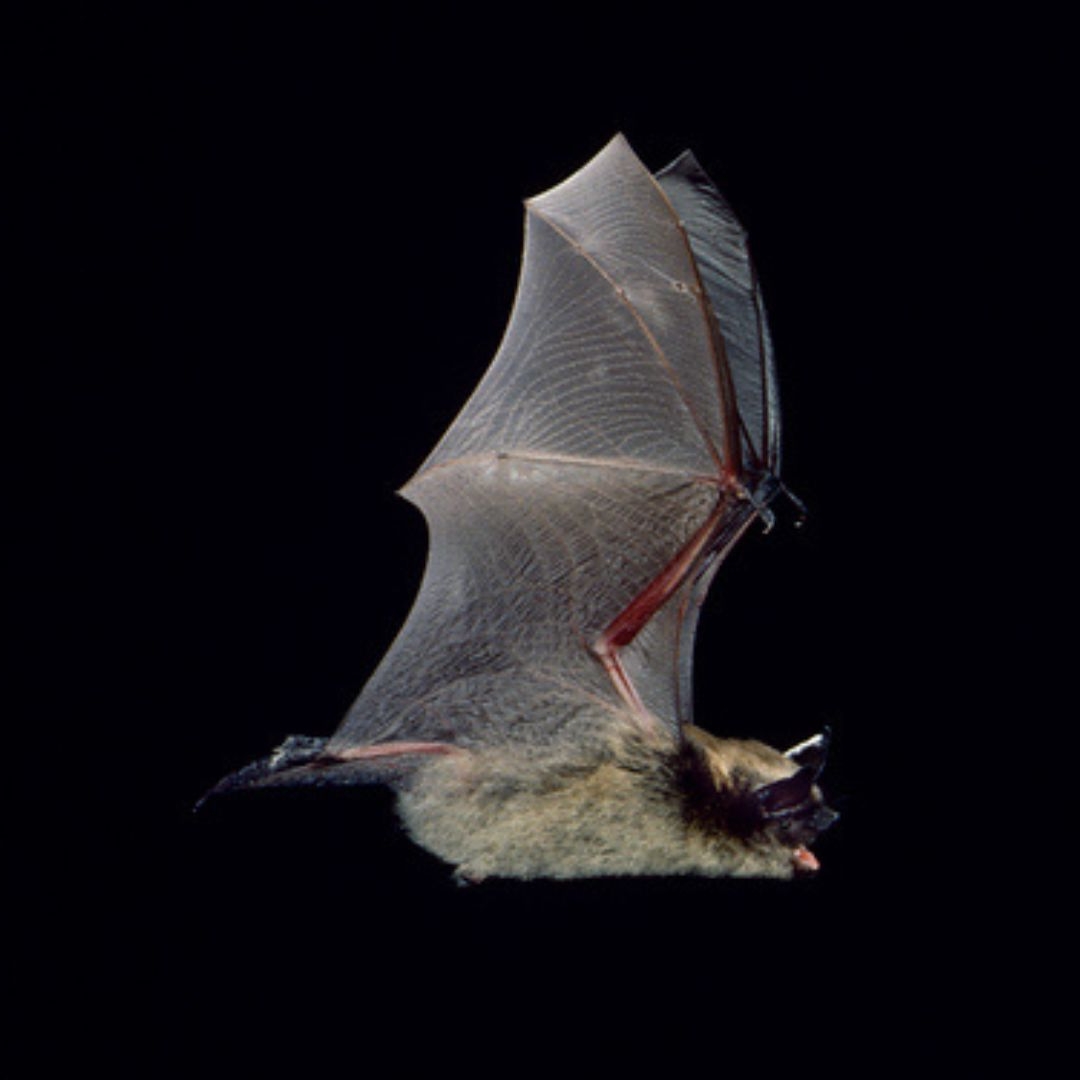
Sound Vision
Imagine yelling at the sky to find your dinner every night.
The little brown bat (Myotis lucifugus) is one of the Midwest’s most common bat species. These small, insect-eating mammals prefer forested areas near water, roosting in trees and caves—but they’ll also settle in buildings and homes.
While they’re the only mammals capable of true flight, their real superpower is echolocation: a biological sonar that lets them “see” with sound. At dusk, they take to the sky, emitting up to 20 high-frequency calls per second. These calls bounce off objects and return as echoes, which their brains translate into a detailed map of their surroundings.
Impressively, they do this while both they and their prey are in flight, detecting insects as small as a tenth of an inch and adjusting their flight mid-air to catch them. A single bat can consume half its body weight in insects each night, making them a powerful natural ally in pest control.
Saving Bats in the Midwest
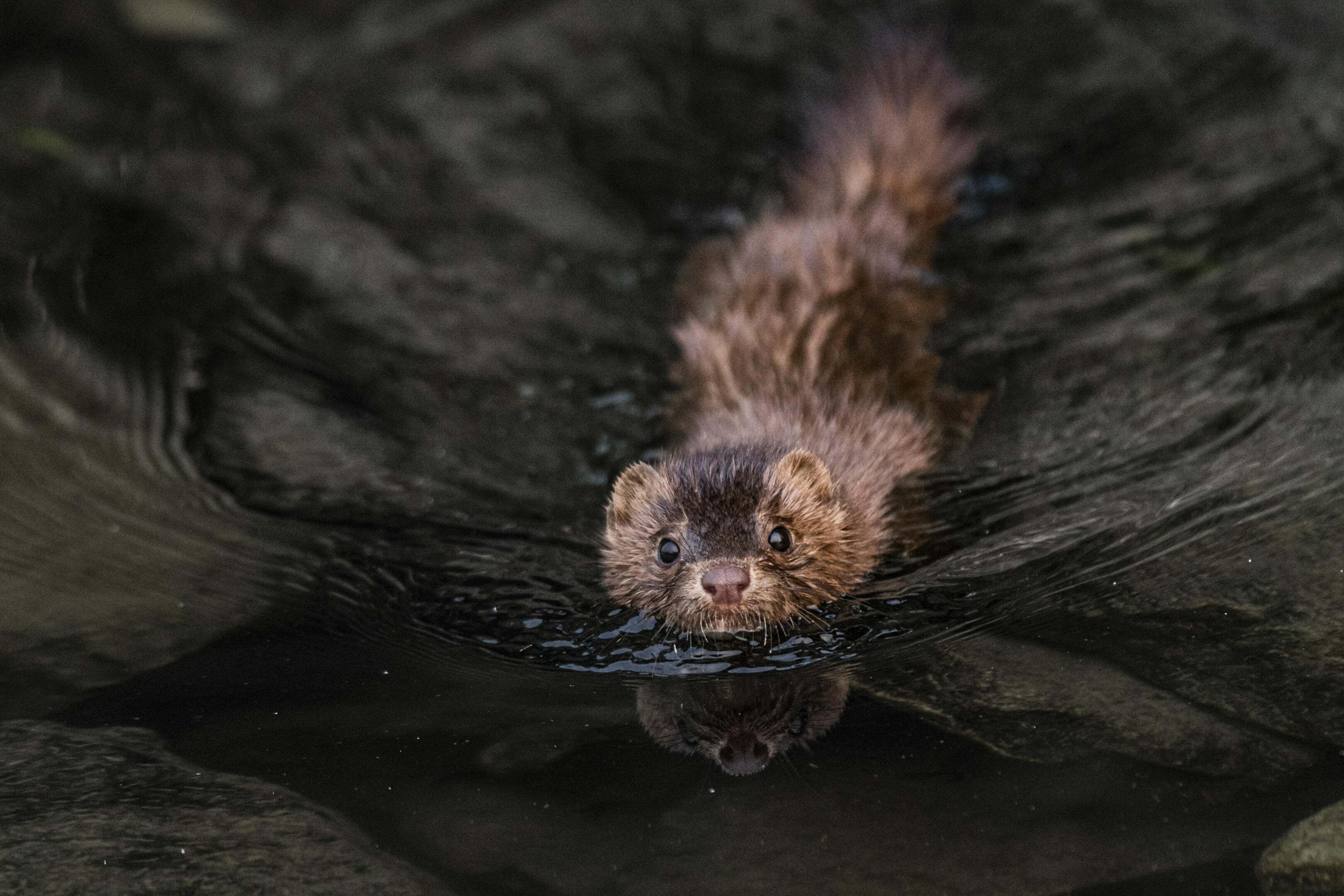
Super Athlete
If minks had a motto, it would be “swim like an otter, climb like a squirrel."
Found across the Midwest and much of the U.S., the American mink (Neovison vison) is one of the region’s fiercest predators. These semi-aquatic mammals thrive in forested areas near water, where they find plenty of brush and rocky cover for shelter. Solitary and agile, minks hunt both on land and in water.
Their superpower? Unmatched athleticism. Minks are powerful swimmers, capable of diving 16 to 18 feet deep and swimming up to 100 feet underwater. In warmer months, they can swim for hours without rest, hunting fish, crayfish and muskrats.
On land, they’re just as formidable—sprinting, climbing trees and leaping between branches. They’ve even been seen chasing squirrels into the treetops, tossing them down, then climbing headfirst to retrieve their catch.

Survival Strategist
Everywhere a coyote goes, it finds a home.
Coyotes (Canis latrans) have coexisted with humans for over 15,000 years, making them one of North America’s most adaptable and resilient mammals. About the size of a border collie, they live alone or in social packs.
Coyotes are monogamous and mate for life. A typical pack includes a bonded pair, their pups and sometimes extended family. They communicate through scent, body language and a wide range of vocalizations—making them the continent’s most vocal mammal. Packs can vary their calls to sound larger, deterring rivals.
Once limited to the western U.S., coyotes now thrive nationwide, from wild prairies to urban centers. Their superpower? Unmatched adaptability, thanks to their omnivorous diet and high intelligence. Together, those traits allow coyotes to adapt and adjust their behavior to any environment they are in.